If you’re pondering the question of how to clean bamboo furniture, you’ve landed in the right space. Bamboo furniture, with its natural elegance and durability, deserves a meticulous care routine to ensure it retains its beauty over time. In this guide, we’ll delve into effective methods and essential tips to keep your bamboo pieces looking pristine.
Contents [hide]
1. How to Clean Bamboo Furniture?
1.1 Regular cleaning
Bamboo products often feature crevices that are susceptible to mold and discoloration when exposed to prolonged humid conditions and the accumulation of dirt and dust. Consistent cleaning is essential.
- Regular cleaning bamboo furniture with a soft brush and a dry towel to wipe away dust and stains.
- Additionally, consider using a high-powered vacuum cleaner to thoroughly clean these areas.
It is important to clean your bamboo furniture regularly and allow it to dry under the sunlight to help prolong its lifespan.
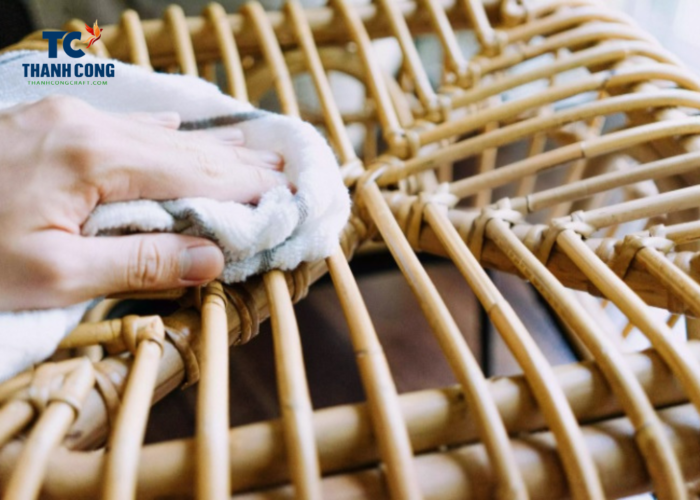
1.2 Use mild chemicals to clean stubborn stains
Bamboo furnitures can have sticky layers of dirt that are difficult to clean. In this situation, you can use mild detergents to clean them.
Please remember avoid using strong corrosive cleaning chemicals and applying this method too frequently.
You may need water; dish soap, white vinegar, baking soda; a soft cloth or sponge; a bucket or spray bottle, and rubber gloves for different stains.
Steps:
Identify the stain: Determine the type of stain you are dealing with (e.g., oil, alcohol, ink, etc.) as different stains may require different approaches.
- For common stains: Mix a few drops of mild dishwashing liquid with warm water.
- For acidic stains (like wine or juice): Dilute white vinegar with water (1:1 ratio).
- For stubborn, greasy stains: Make a paste by mixing baking soda with a small amount of water.
Start by testing on a small area to ensure it doesn’t cause any damage or discoloration.
Absorb the cleaning fluid and gently scrub the dirty area. Then rinse the area with clean water and dry it with a clean cloth. Once clean, dry your bamboo furniture under the sunlight to prevent mold growth.
If possible, apply a protective coating or stain repellent to furniture surfaces as a precaution.
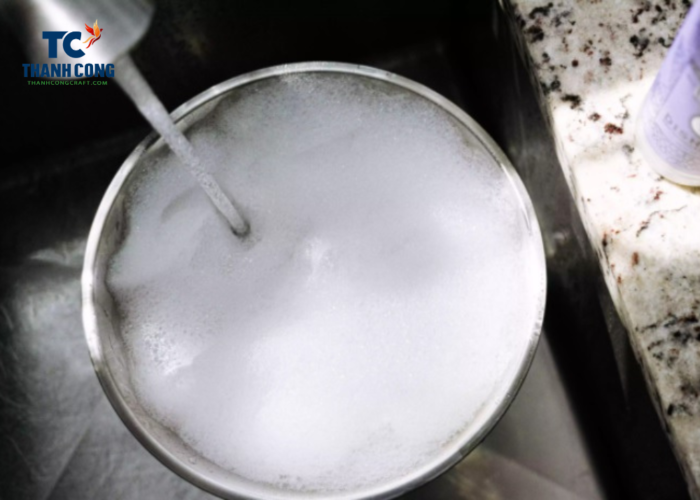
1.3 Insect and mold repellent
For bamboo furniture treatment and ensuring its longevity, mere cleaning is insufficient. In addition to regular wiping and sun exposure, incorporate solutions that repel insects and mold.
Some natural oils can help repel insects and protect bamboo. You can dilute the neem oil and cedarwood oil in water and use a spray bottle to apply them to your furniture. They are known for their insect-repelling properties.
These treatments foster prolonged use, durability, and facilitate an easier cleaning process by minimizing dust and mold accumulation.
Note: When cleaning bamboo furniture, wear a mask and gloves to protect yourself and reduce inhalation of dust and dirt.
2. How to Clean Mold off Bamboo Furnitures?
Many homeowners favor choosing bamboo and rattan furniture for their natural and rustic charm. However, not everyone is well-versed in ‘How to Clean Mold Off Bamboo Furniture’ to ensure its durability and beauty.
2.1 Why does bamboo furniture grow mold?
Bamboo has a porous structure that can absorb moisture easily. When exposed to high humidity or damp conditions, especially in poorly ventilated areas, bamboo furniture can become a breeding ground for mold.
Mold requires organic materials to thrive, and bamboo, being a natural material, provides an ideal food source. Dust and other organic particles that settle on the bamboo surface can contribute to mold growth if moisture is present.
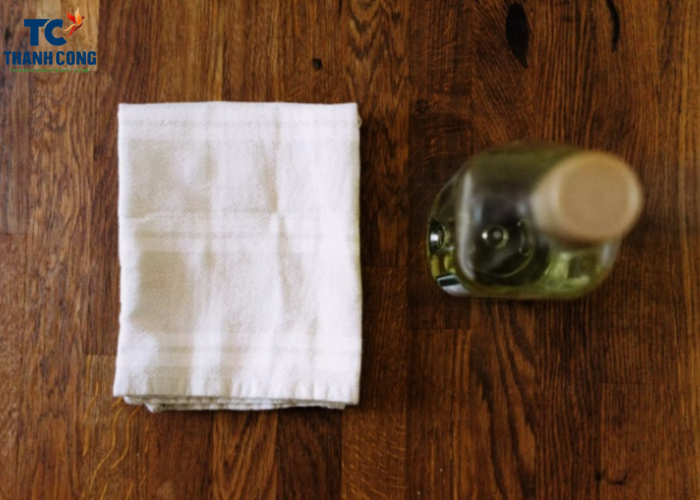
2.2 What types of mold attack bamboo furnitures?
Several types of mold can potentially attack bamboo furniture, taking advantage of its organic composition and porous structure. Here are some common types of mold that may affect bamboo furniture:
- Aspergillus: Aspergillus is a common mold genus that can grow on various organic surfaces, including bamboo. It is often characterized by its powdery appearance and can produce mycotoxins under certain conditions.
- Cladosporium: Cladosporium is a widespread mold genus that can colonize bamboo surfaces. It is known for its black or green appearance and is often found on damp materials.
- Alternaria: Alternaria is another mold genus that can impact bamboo furniture. It is known for its velvety texture and dark color. Alternaria spores are prevalent in the environment and can settle on bamboo surfaces.
- Stachybotrys (Black Mold): Stachybotrys chartarum, commonly referred to as black mold, is a mold species known for its dark green or black appearance. While it is not exclusive to bamboo, it can develop on damp surfaces, posing potential health risks.
- Penicillium: Penicillium is a mold genus that can grow on a variety of materials, including bamboo. It is recognized by its blue or green appearance and may produce mycotoxins.
It’s essential to note that the specific type of mold attacking bamboo furniture can vary depending on factors such as environmental conditions, humidity levels, and the presence of organic matter.
Identifying the type of mold is crucial for implementing effective cleaning methods and preventive measures tailored to the characteristics of that particular mold. Regular inspection and prompt cleaning can help mitigate the risk of mold infestation on bamboo furniture.
2.3 Steps to remove mold from bamboo furnitures
To ensure the longevity and aesthetic appeal of bamboo furniture, it’s essential to promptly and effectively address mold. Follow these steps to eliminate mold from bamboo furniture:
- Assessment: Examine the extent of mold growth on the bamboo furniture. Identify affected areas and assess the severity of the infestation to determine the appropriate cleaning approach for bamboo furniture mold.
- Protective Gear: Before initiating the cleaning process, wear protective gear such as gloves and a mask to safeguard yourself from mold spores and cleaning agents.
- Dry Brushing: Start by gently brushing the affected areas with a dry brush to remove loose mold particles. This initial step helps prevent the spread of spores during the subsequent wet cleaning phase.
- Vinegar Solution: Prepare a solution of white vinegar and water. Apply this mixture to the mold-affected areas using a soft cloth or sponge. Vinegar serves as an effective natural mold disinfectant, aiding in breaking down and removing mold.
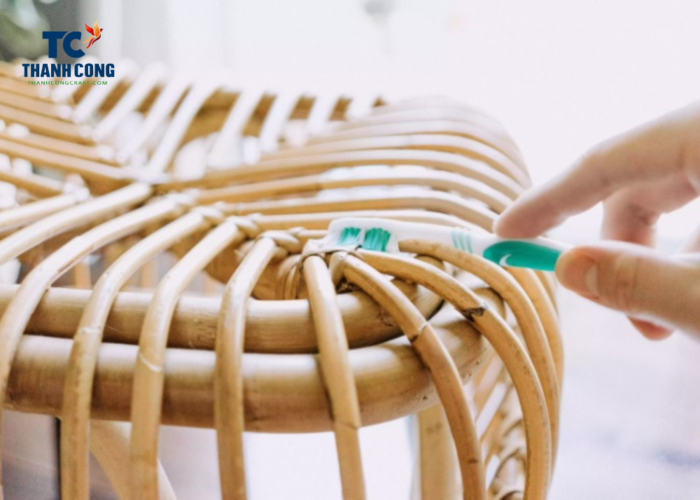
- Scrubbing: For stubborn mold stains, use a soft brush or an old toothbrush to gently scrub the affected areas. Ensure thorough coverage, paying attention to crevices and joints.
- Rinsing: After cleaning, rinse the bamboo furniture with clean water to remove any remaining vinegar solution and loosened mold particles.
- Drying: Allow the furniture to dry completely. Proper ventilation and exposure to sunlight can aid in the drying process and prevent future mold growth.
- Preventive Measures: Implement preventive measures, such as maintaining proper ventilation, controlling moisture levels, and conducting periodic inspections, to avoid mold recurrence. Applying a protective finish to the bamboo surface can also deter black mold on bamboo furniture.
3. How to Care for Bamboo Furnitures?
To make bamboo furniture products always durable, colorfast and sturdy, users need to have some tips to care for bamboo furniture. Here are some suggestions for some methods to care for bamboo furniture.
- Pay attention to the layout area: Bamboo furniture is very sensitive to the environmental impacts. To ensure the durability of bamboo furniture, you should place bamboo furniture in cool areas, limit direct exposure to rain and sun for a long time.
- Gloss the surface: The glossing of the surface of bamboo furniture not only ensures that the product is always durable, avoiding the attack of insects and mold, but also enhances the aesthetics of the product. You can use oil paints, glossy paints, PU paints. And you should gloss the surface once a year to ensure that the furniture is always beautiful.
- Use disinfectants: Although it is a durable material, some bamboo furniture may still have problems such as termites, mold due to some issues such as the bamboo furniture supplier not treating the surface effectively, low humidity environment creating conditions for termites to breed, .. you can use disinfectants such as LN5 90SP, CISLIN 2.5EC, .. to solve the problem of termites and mold with your bamboo furniture products.
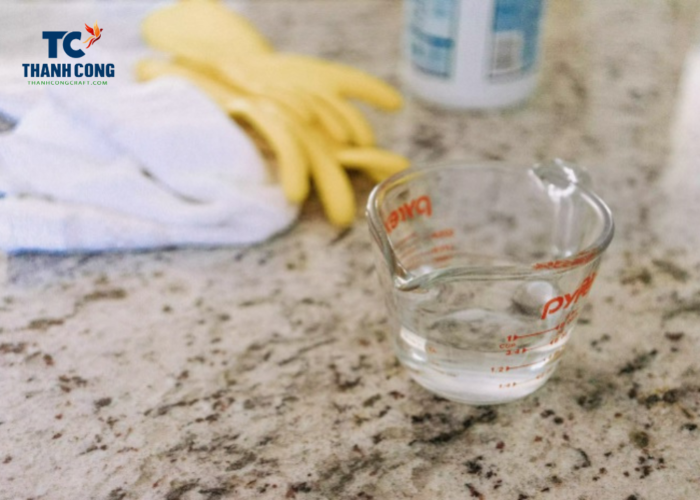
- Clean properly: Bamboo furniture with glossy coating is very easy to scratch, besides, bamboo furniture is made from bamboo sheets combined with each other so there are often gaps. When cleaning bamboo furniture, gently clean with a cloth, use a vacuum cleaner to clean dirty cracks and crevices.
Avoid direct contact of bamboo with water: Minimize the situation of spilling water on bamboo products, in case of accidentally or unfortunately spilling water, you need to quickly dry and clean that area.
In essence, mastering how to clean bamboo furniture is the key to preserving its natural beauty and ensuring its longevity. By adopting simple and effective cleaning methods, such as using a damp cloth, dry brushing, and applying natural disinfectants like white vinegar, you can easily maintain the cleanliness of your bamboo furniture.
If you have any further questions, don’t hesitate to send thanhcongcraft an email us at info@thanhcongcraft.com or directly contact us via WhatsApp: +84967485411. Hope to serve you soon! Best regard!


